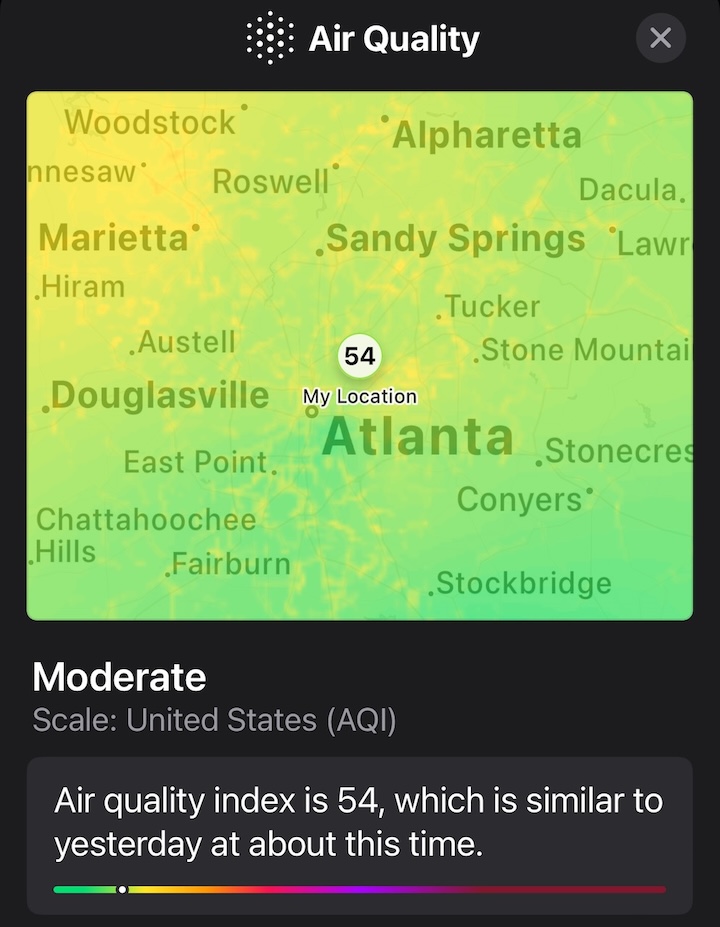This week I saw a photo that will haunt me for the rest of my life. It’s one thing to know something. It’s another to see it. I’ve been writing about indoor air quality and the health effects of indoor air pollutants for a long time now. And I’ve been stressing how important it is to reduce the amount of particulate matter, especially the really small stuff, that we inhale. Now there’s a research study out that shows the effects of air pollution on the human body.
Particulate matter
Researchers who study the effects of air pollution point to a lot of different pollutants as problems for our health. One of the top air pollutants they mention is usually referred to simply as PM2.5, which stands for particulate matter that’s 2.5 microns or smaller. This sketch from the U.S. EPA shows how it compares in size to a human hair or grains of sand.
There’s a good reason the tiny invisible particles floating around in the air are so much worse than the larger ones. Because they’re so small, they can penetrate deeper into our respiratory system. The big ones get stopped in your nose or throat. The small ones make it all the way to your lungs.
OK, so what happens when those tiny particles get into your lungs?
A look at lymph nodes
The recent study I referred to is from the scientific journal Nature. (You can read a short summary or the whole article.) The researchers took sample lymph nodes from deceased organ donors of different ages. Why lymph nodes? As they say in the summary, lymph nodes are an important part of our immune system, and they “filter impurities and coordinate the clearance of harmful antigens and pathogens.”
Now, that haunting photo I mentioned above is the one just below. It shows a panel of the lymph nodes associated with the lungs from people of different ages.

At age 20, it looks like normal human tissue. By 29, it’s getting a dark spot. By age 62—which just happens to be my age as I write this—it’s completely black. Wow!
![A different look at damaged lymph nodes showing the effects of air pollution [Nature, Vol. 28, Dec. 2022, pp. 2482-3]](https://www.energyvanguard.com/wp-content/uploads/2024/01/air-pollution-particulate-effect-on-lymph-nodes-b.jpg)
The image above is also from the study and shows a different set of lymph nodes. In the left two columns you see the lung-associated lymph nodes. In the right two columns are lymph nodes from the gut. As you can see, the lymph nodes from the lungs get clogged with particulates as a person ages, and the ones from the gut stay normal looking.
Naturally, you’re probably wondering what we know about the people who donated their lymph nodes for this study. According to the paper, they were from the New York metropolitan area and were “non-smokers and/or with no history of heavy smoking.” We don’t know, however, if any of the donors had significant exposure to particulate matter in their jobs.
What can you do?
The first thing you can do to protect yourself is to be mindful of what you’re breathing. If you work in an environment with a high potential for exposure to particulates, you better have some good personal protective equipment (PPE). Don’t be afraid to wear a mask and respirator just because no one else is.
Also, check the air quality when you’re planning outdoor activities. The good news is that weather apps make this easy to find. Below is the one I see in my iPhone weather app. The EPA developed the Air Quality Index and has a table showing what the colors and numbers mean. Even better, though, Vox has a nice article showing how to use the Air Quality Index.

And then there’s indoor air. You can monitor the carbon dioxide level to get an idea of how much dilution you’re getting through air changes with outdoor air. You also can get good inexpensive indoor air quality monitors that tell you that and also the PM2.5 level indoors. I’ve got two Awair Elements in my house and also a couple of Airthings for Business monitors.
But monitoring tells you only how bad the air might be. To do something about particulates in your indoor air, you need good filtration. And on that topic, I’ve got you covered. Start with my article, 3 Ways to Get Cleaner Indoor Air With Filtration, and you’ll find a lot of guidance on how to get the particles out of your indoor air.
_______________________________________________________________________
Allison A. Bailes III, PhD is a speaker, writer, building science consultant, and the founder of Energy Vanguard in Decatur, Georgia. He has a doctorate in physics and is the author of a bestselling book on building science. He also writes the Energy Vanguard Blog. For more updates, you can subscribe to Energy Vanguard’s weekly newsletter and follow him on LinkedIn. Images courtesy of image.
Weekly Newsletter
Get building science and energy efficiency advice, plus special offers, in your inbox.
